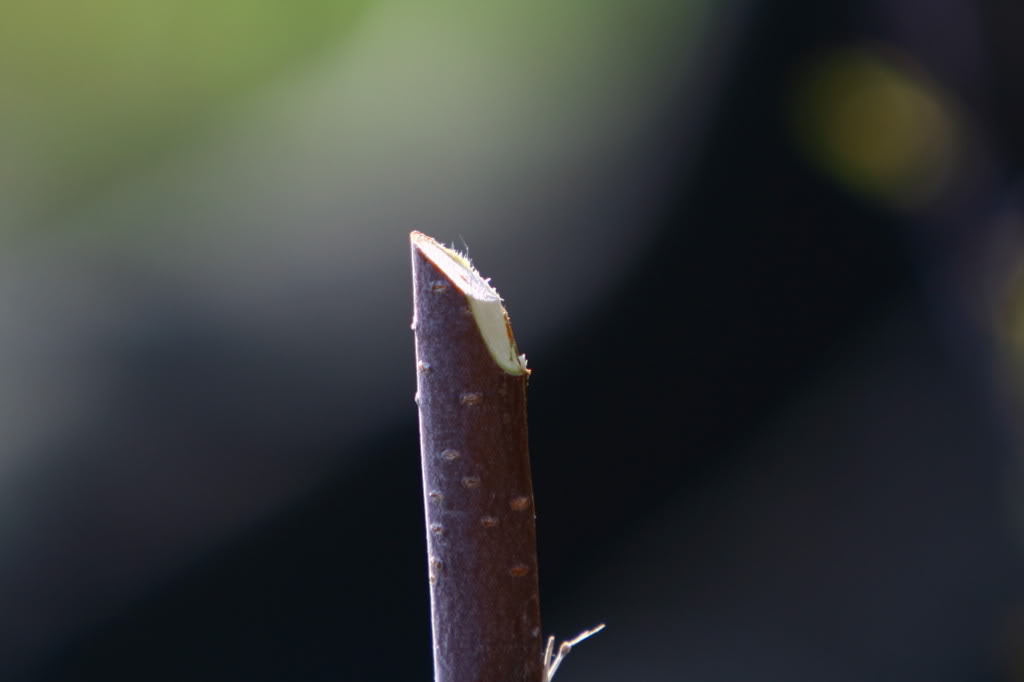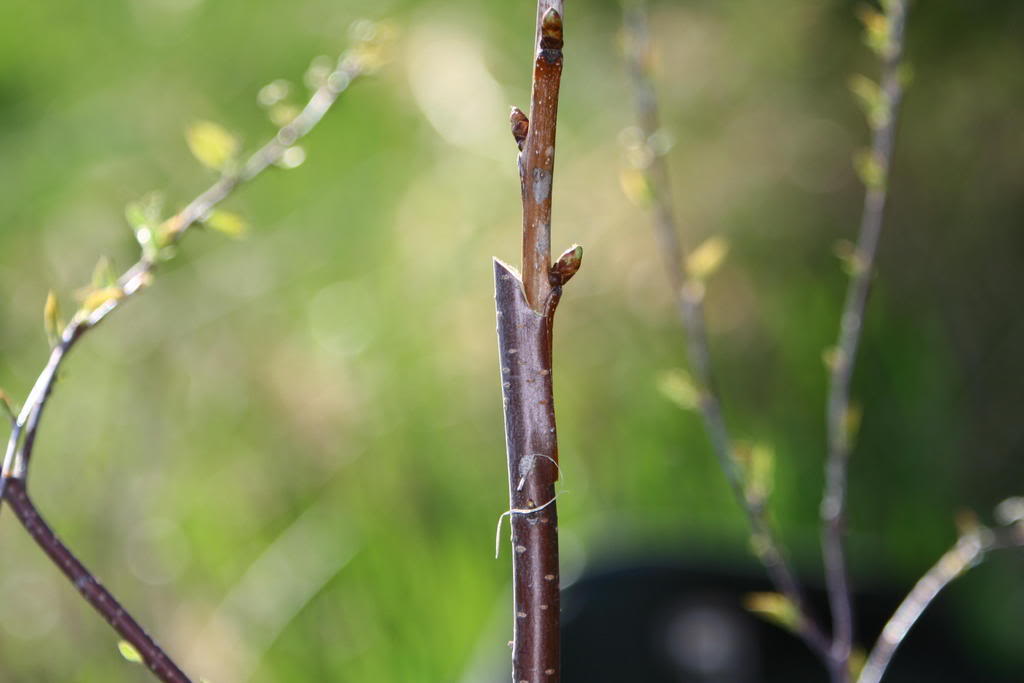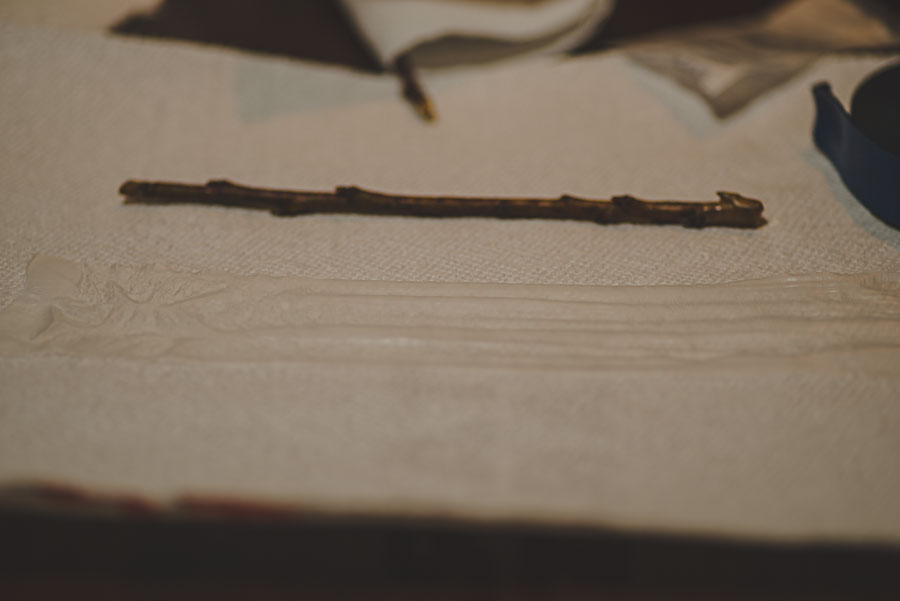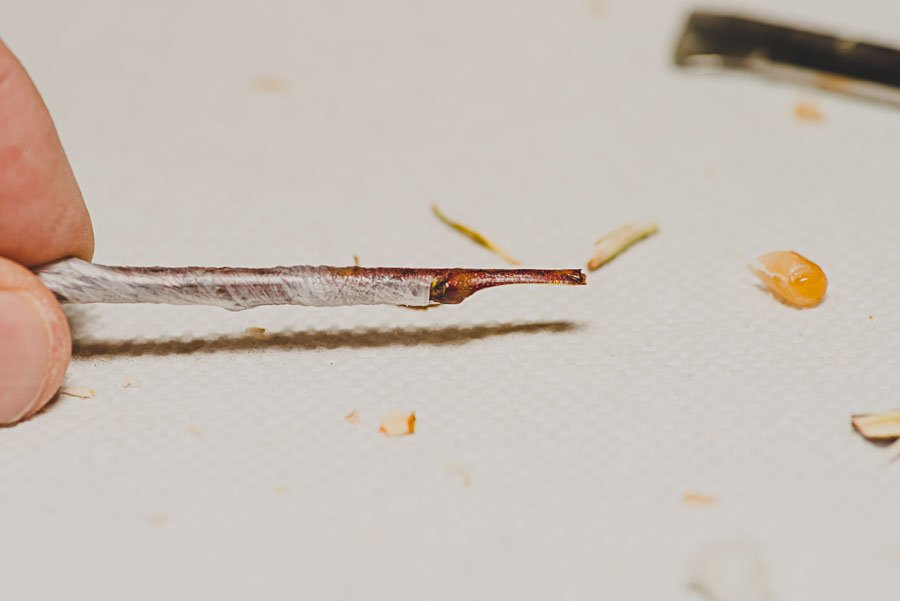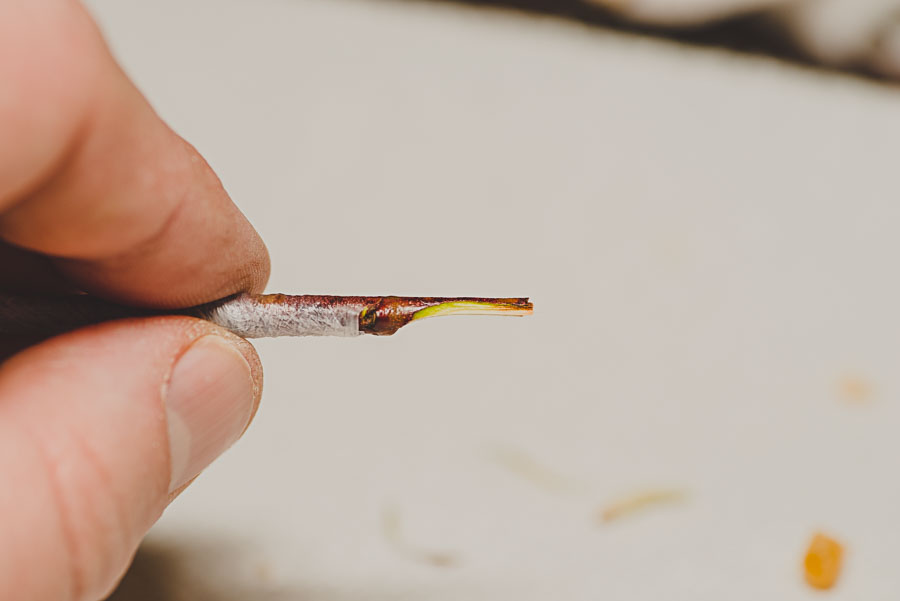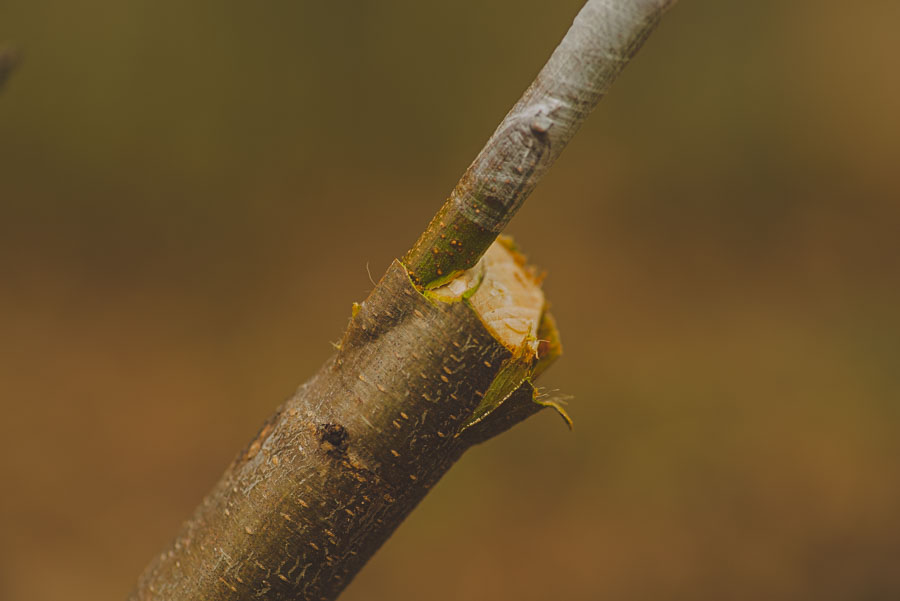I’m really hoping that others here will tear into this stuff and fix it fill it out as they see the need. Please do! Please!!
When I started grafting I didn’t know the difference between grafts, so I thought it might be useful to lay out a few points.
A lot of people graft in the spring as the destination tree is getting ready to take off. Typically grafters like to wait until the tree has small leaves on it, and the grafts generally used are splice (also known as whip), or cleft, or a splice with a tongue cut in it, called a whip and tongue, or bark. But it’s also possible to do a chip at this time, and if the bark is slipping budding can be done.
There’s also a lot of summer grafting done, and usually that means budding or chipping.
Spring grafts are expected to take and grow within a week or three and usually will; Budding and chipping done in the summer are expected to heal in and then emerge in the following spring.
Spring grafts use dormant wood from the previous season’s new growth, so in 2018 you’d use the youngest growth from 2017.
Summer grafts use the dormant buds from the current year’s growth. That confused me. What it means is that you go out in the summer of 2018 and cut a “bud stick”- a nice, healthy new shoot that first grew in the summer of 2018 and is only a few weeks old. It’ll have a number of buds on it that are dormant. If you don’t see any they’re hiding under the stems of a leaf. These dormant buds can be used for budding or chipping.
There are other useful grafts, but these are pretty basic and common and a good place to start. A lot can be learned about all of these grafts just by using the search function on this board. There are good tutorials and discussions put together by several regulars here. If I weren’t so lazy I’d try to do a bunch of searching and list them all here, but I’d leave somebody and something out and that wouldn’t be right, so I’ll let you leave them out instead!
Thanks for reading.




